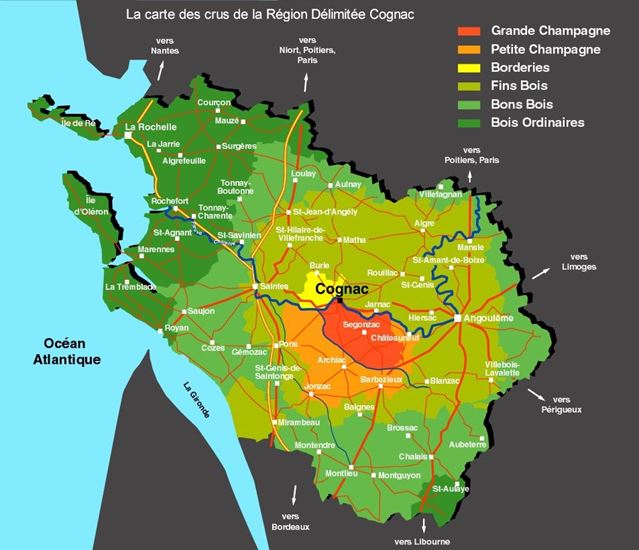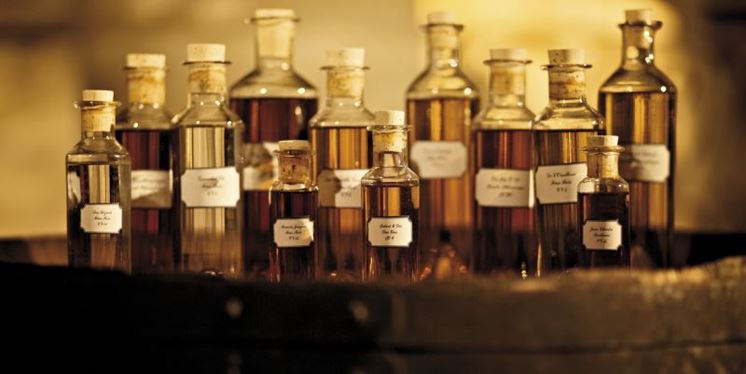
Cognac has come to symbolise the finer things in life. Along with whisky, it has an aspirational image and is synonymous with class, elegance, and just a touch of swagger. The Cognac region itself lies 80 miles north of Bordeaux, with the picturesque towns of Cognac and Jarnac at its heart. Cognac vineyards stretch all the way to La Rochelle in the north, Angoulème in the east and Royan in the west.
Cognac is divided into six areas, or crus. The two finest are Grande Champagne and Petite Champagne – Cognacs made from only these two areas may be labelled ‘Fine Champagne’, provided that Grand Champagne eau-de-vie makes up at least 50% of the blend. The term is nothing to do with France’s celebrated sparkling wine, however; the word ‘champagne’ refers to the chalky soil found in the region. The other Cognac crus are Borderies and three much larger areas: Fins Bois, Bons Bois and Bois Ordinaires.
The very best Cognacs all share a character that develops with age and is hard to describe accurately: rancio. Rancio is an amalgamation of aromas, flavours and nuances that include fruit cake, spice, leather, tobacco, nuts and even an earthy, mushroom character. There are four accepted stages of rancio, which takes at least 10 years to develop in a good Cognac:
- 1st stage – 10 to 15 years – nuts, vanilla, floral notes
- 2nd stage – 16 to 25-30 years – spices, candied fruits, jasmine, saffron
- 3rd stage – 30 to 40-50 years – tobacco, cigar box, nutmeg, eucalyptus
- 4th stage – 50 to 60 years – tropical fruits, lychee, sandalwood

